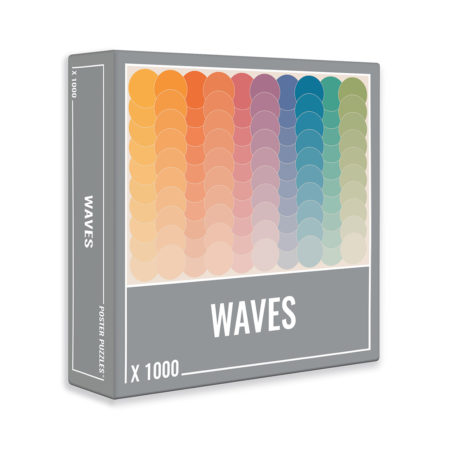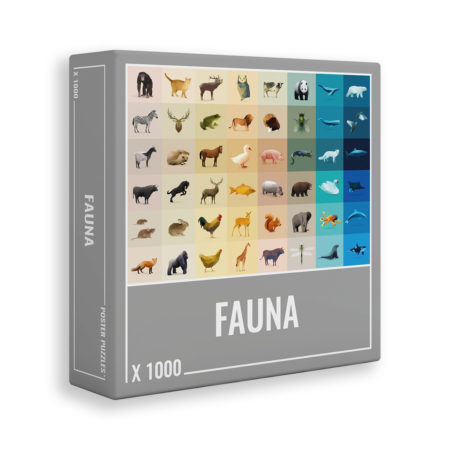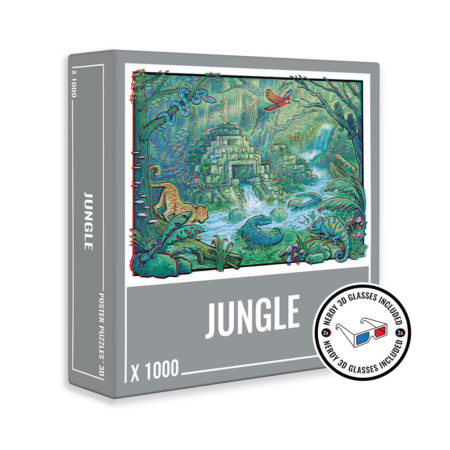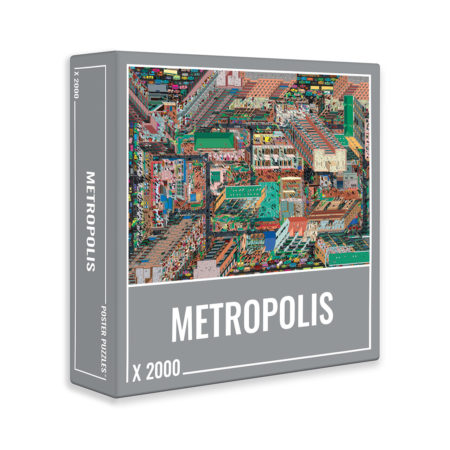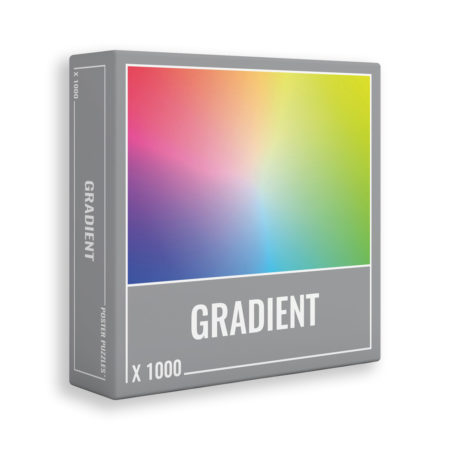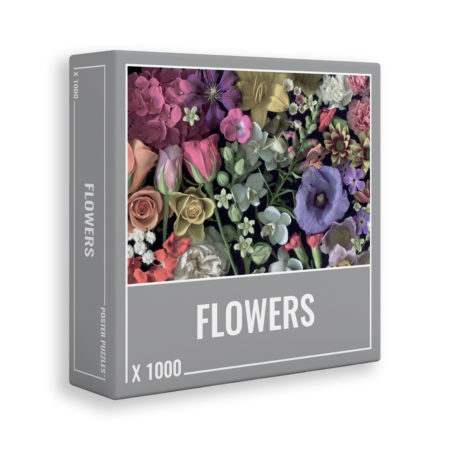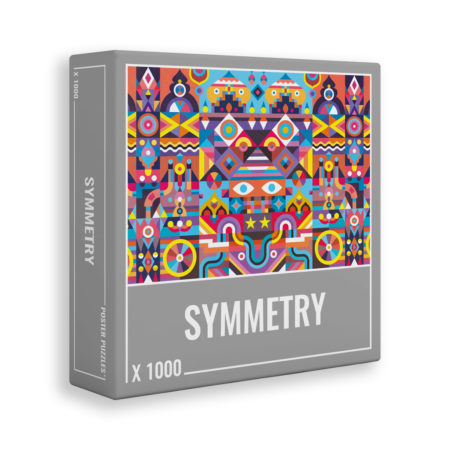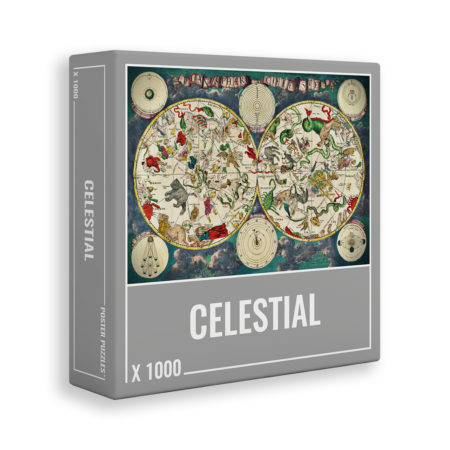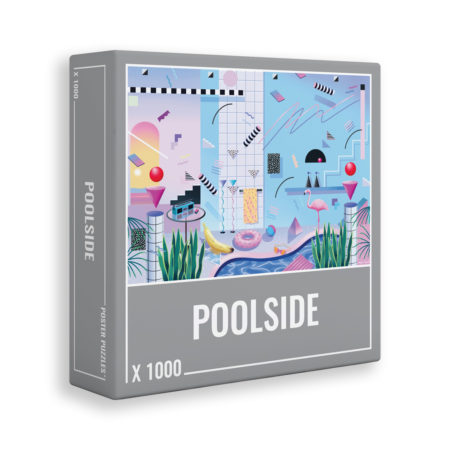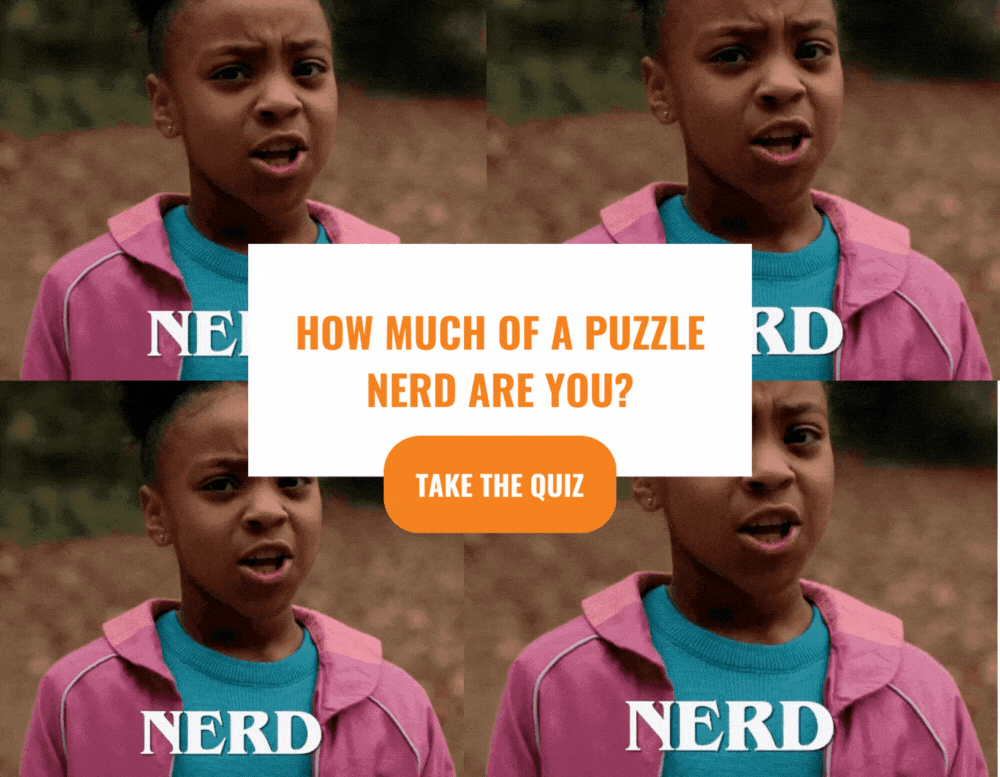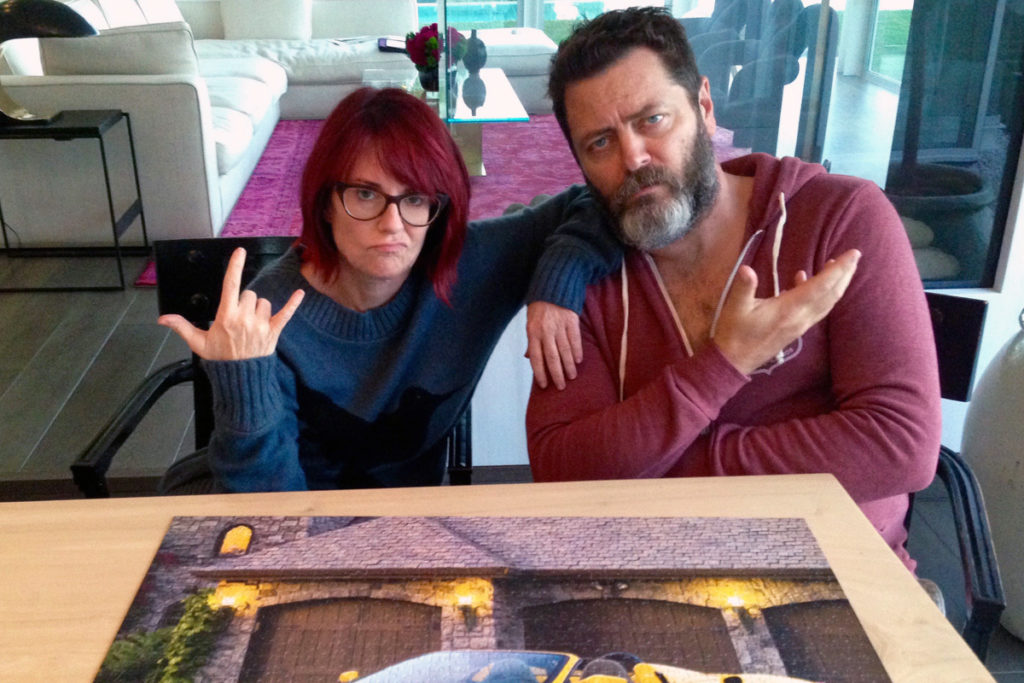When you’re choosing a jigsaw puzzle, you might judge the size of the challenge ahead of you by looking at just one factor – the sheer number of pieces. After all, it makes sense that a 1000-piece puzzle would be far easier to complete than a jigsaw with twice as many pieces. Right? Well… not always.
In this blog we want to give you an idea about how long a 1000-piece puzzle usually takes, and help you to work out what to expect from different kinds of puzzle designs – and importantly, how many hours you need to set aside to get the whole thing finished!
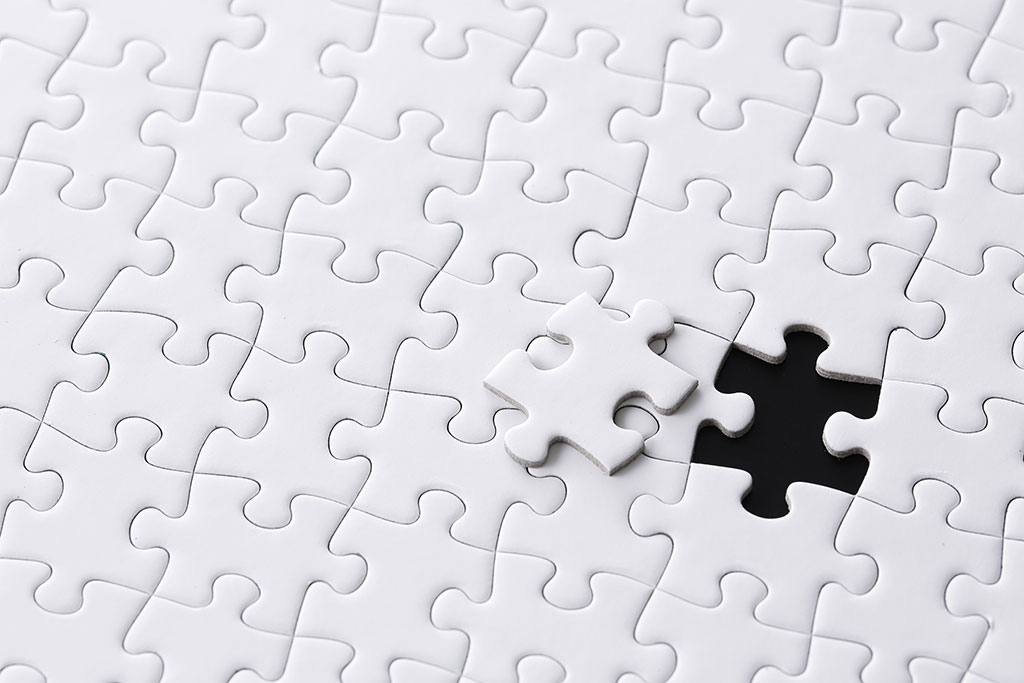
Determining how long your puzzle will take
There are lots of different factors that affect the difficulty level of a 1000-piece jigsaw puzzle, from the cut of the pieces to the complexity of the image that you’re putting together. So while there’s no single answer to how long a 1000-piece puzzle will take, there are a few things you should consider before getting started:
The image
Nothing affects the difficulty of a 1000-piece puzzle more than the image itself. It goes without saying that a puzzle made up from a single block of colour will take a lot longer to complete than one with lots of small and unique details that help you put the pieces in the right places.
But puzzles that look tricky aren’t always as challenging as they seem. Our classic GRADIENT puzzle, for example, is just a swirl of rainbow colours without any handy details to keep you on track. Despite this, it’s actually one of our easiest 1000-piece puzzles and can usually be completed by a total puzzle noob in less than four hours.
When puzzles are reaaaaally detailed (like this super tricky black-and-white design) things can get considerably more difficult. Although our SHELLS puzzle only has 1000 pieces, it can take more than 30 hours for an experienced puzzler to complete. Now that’s a difficult jigsaw!
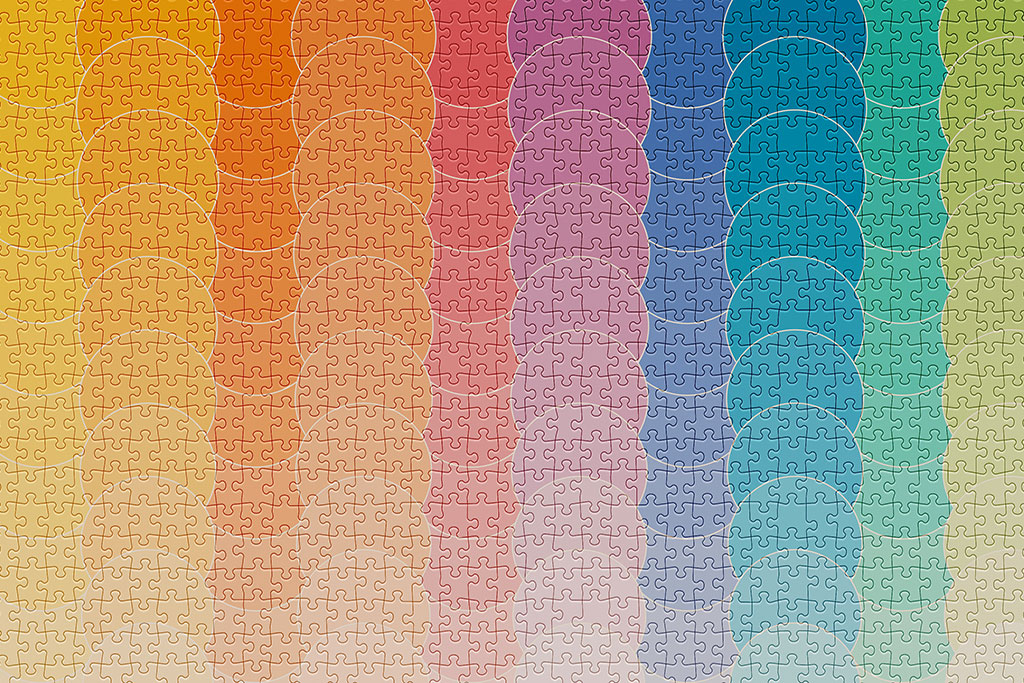
Cut shape
Puzzles with more uniform-looking pieces can be a little trickier to get finished. So-called ‘ribbon cut’ puzzles line up in a classic grid shape, so it can be a little harder to work out which piece goes where (in other words, they aren’t as unique).
If a ribbon-cut puzzle has ‘false fits’ (pieces that appear to go in a certain spot, but don’t really fit there) then it could take much longer to get finished, as there is an element of trial and error – or even brute forcing – involved.
Random-cut 1000-piece puzzles with unique piece shapes aren’t always easier though, and a lot depends on the design and how well the pieces fit together.
Piece size
Most 1000 piece puzzles have pieces that are around an inch (or a couple of centimetres) across. And while it’s very rare to find jumbo-sized floor puzzles with this piece count, a few brands sell 1000-piece puzzles with tiny – or micro – sized pieces. This can make the puzzle a lot more fiddly to put together, and will almost certainly make completing it a much slower process!
Puzzle quality
Cloudberries puzzles are precision cut to make sure that the pieces slot into one another with a satisfying ‘click’. With some cheaper puzzles that isn’t always the case, and you’ll find yourself second-guessing about whether pieces are really supposed to go where you’ve placed them. So definitely bear in mind that you can make your puzzling faster and more satisfying by choosing a decent brand.
Any helping hands
Whatever size puzzle you’re working on, having some extra help can go a very long way. And although some people prefer to puzzle alone, inviting a couple of friends to work on a 1000-piece puzzle with you can be a fun way to speed things along (you can even host a puzzle party!). Normally, with a typical-sized 1000-piece puzzle, there’s enough space around the puzzle for up to four people to help out.
Other things can also help you to get your puzzle finished more quickly. If the puzzle comes with a full-sized poster, for example, you can place that underneath and complete the puzzle on top (though true nerds know that this is cheating!). And of course it helps if the image on the box is big enough to use as a guide when joining the jigsaw together.
Your experience level
Are you sitting down to do a jigsaw for the second or even third time? Then of course you’re going to be faster than when you completed it for the first time. You’ll recognise small details and have a good idea of which puzzling strategy to use.
And it’s not just about whether you’ve tackled a specific puzzle before; experienced puzzlers who are used to sorting, grouping and strategising are always going to be a bit faster than a total noob who’s just starting their puzzle journey.
How long does a typical 1000-piece puzzle take?
Because of all the factors listed above, it’s not possible to say how long a ‘typical’ 1000-piece jigsaw would take to complete. But it is easy enough to have a decent guess, based on the type of puzzle you’re working on. Here are some examples to get you started, with an idea of how long each would take a solo puzzler to complete.
| Type of puzzle | Number of pieces | Approximate time to complete | Example puzzle |
| Gradient puzzle | 1000 | 3 to 6 hours | WAVES |
| Simple image puzzle | 1000 | 4 to 8 hours | FAUNA |
| Complex image puzzle | 1000 | 6 to 20 hours | BACKYARD |
| Single colour or impossible puzzle | 1000 | 20 to 40 hours | SHELLS |
Fast and easy 1000-piece puzzles
These are some of the easiest 1000 piece puzzles out there, with clear blocks of colour and minimal details to help you piece together everything in the fastest time possible. Even if you puzzle these designs slowly, you should be finished in less than six hours.
1000-piece puzzles that take a very long time to complete
These are some of our toughest-ever puzzles, with tonnes of tiny details which help keep them fun while walking the narrow line between challenging and impossible!


